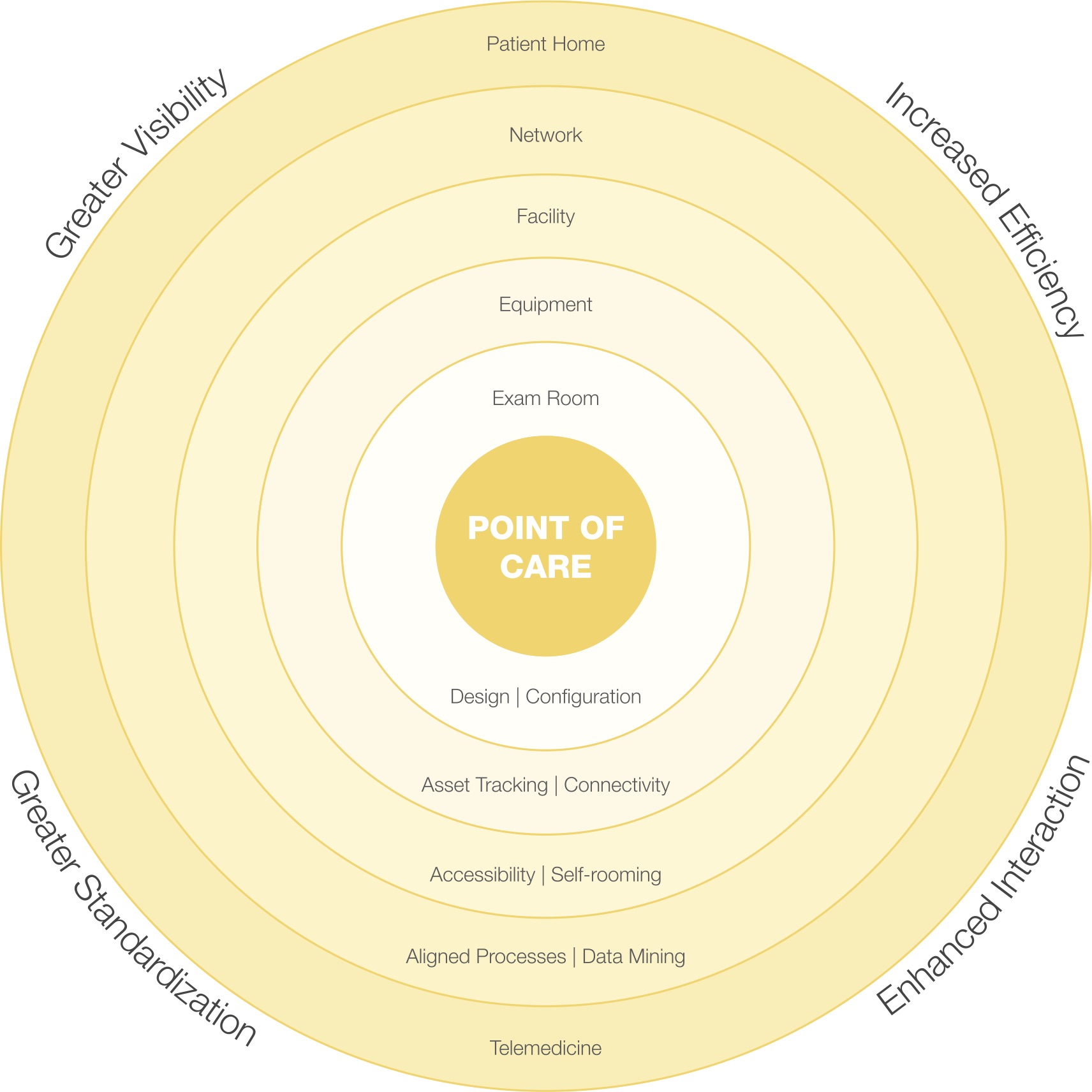As outpatient facilities look for ways to enhance patient care and take advantage of opportunities for growth, the industry continues to see an increasing number of surgical procedures conducted in outpatient/ambulatory settings.
While there are a number of challenges to consider as part of this shift, practices that strive to balance efficiency with creating a comfortable and inviting patient experience are well positioned for success.
A Balanced Approach
The pressure to be more efficient has been a driving force within the healthcare industry for a number of years. Traditional physician practices and clinics have historically placed more emphasis on resources and technologies that promised to increase efficiencies.
It is only recently, in large part driven by the Affordable Care Act (ACA) and a shift toward value-based reimbursement programs, that outpatient facilities are placing equal emphasis on both efficiency and patient experience.
One way to successfully strike this balance is by viewing the clinical space, procedure rooms, and caregiver-patient interaction as part of a point of care ecosystem. Within the point of care ecosystem, everything is connected and can impact patient and caregiver experience, as well as the quality of care provided.

Under Ecosystem Graphic: A fully connected point of care ecosystem integrates processes, equipment and caregivers to create a seamless, well-coordinated patient experience and positively impact clinical outcomes.
A fully connected ecosystem is becoming more of a reality as new technologies continue to integrate processes, equipment, and caregivers at the point of care. This connected ecosystem ensures a more satisfying and seamless patient experience by providing a platform where organizations can leverage new technologies, incorporate best practices and employ greater standardization to improve care and outcomes.
Within The Ecosystem
Having the right ecosystem components in your procedure room can help ensure equal weight is given to both efficiency and patient experience. The following are key components within the procedure room and how they help provide that balance.
Procedure Room Design: The design and layout of the procedure room is one of the most important foundational elements in the point of care ecosystem. Since this is where patients and caregivers spend most of their time, having the right layout and configuration designed with the patient in mind can help strike the right balance of efficiency and experience. The procedure room should seamlessly integrate consultation, counseling, and treatment.
The patient experience is enhanced by creating inviting environments that respect patient privacy needs and helps patients feel comfortable and safe. The space should be free of clutter, with equipment and supplies stored out of sight until needed giving the room a non-clinical look and feel.
A well-designed consultation and family/visitor zone will foster shared communication between caregiver, patient, and family members.
It’s also important to remember that a correctly configured room accommodates wheelchair turnaround for disabled patients.
To ensure increased efficiency, be sure the room size is large enough to comfortably accommodate patients and caregivers, and allows exams and procedures to be properly performed. This includes proper procedure chair placement within the room to give caregivers and surgeons easy access around the entire chair.
The room configuration and size should allow for versatility in introducing new equipment and in-office procedures, as well as future growth. It should be designed to provide ability to easily bring equipment and supplies to the patient when needed and return to previously stowed position, simple strategies which declutter the room and enhance workflows.
Procedure Chairs: One of the most important pieces of equipment for outpatient surgery is the procedure chair. This patient-positioning device allows caregivers to efficiently deliver quality patient care without sacrificing patient comfort. The ideal procedure chair for a balanced approach is one that provides the functionality of a clinical device while offering comfort design elements of a chair.
The chair should: allow for movement along four axes to provide flexibility needed to achieve maximum comfort and relaxation; have a low height of 17 to 19 inches to allow patient to access chair with little to no assistance, increasing patient comfort and protecting patient dignity; and have a more natural “chair-like” position to take pressure off the head and neck, and keep patients comfortable during procedures.
The chair movement should give caregivers unobstructed access to patients and a clear view of the procedure site while remaining in the proper ergonomic working position. Features such as power height, back, foot, and tilt allow caregivers to quickly and precisely move patients into the most effective position for a wide range of procedures. And built-in rotation lets caregivers move patients to the treatment device instead of requiring devices or physicians to move. All of these features improve efficiency.
Mobile Workstations: Today’s workstations need to provide flexibility to support the integration of technology — such as electronic medical records (EMR) and tablets — within the procedure room while improving caregiver-patient interaction. These workstations must help organizations bring digital information to the point of care without sacrificing workflow or negatively impacting caregiver or patient experience.
Mobile workstations should facilitate information sharing, enhancing patient interaction and education. Adjustable workstations allow caregivers to maintain a proper working position without sacrificing eye contact with the patient. And flexible movement provides access to all patient data at the point of care.
Mobility provides flexibility for rooms to be easily customized and space-saving measures to be taken. When designed correctly, the mobile workstations allow caregivers to integrate technology without putting strain on patient-caregiver interactions.
Efficiency is achieved when there’s a centralized hub feeding the patient data, enabling caregivers to quickly access relevant information during visit.
It’s also important to consider workstation coverings and finishes to minimize work surface seams, enhancing cleaning and infection control processes.
The Bottom Line
Using the patient-centric approach of the point of care ecosystem, practices introducing or expanding surgical procedures are able to equally weight patient experience with efficiency requirements and work toward improved patient satisfaction and better outcomes.
A version of this article appears in the January/February 2018 issue of Surgical Products.




